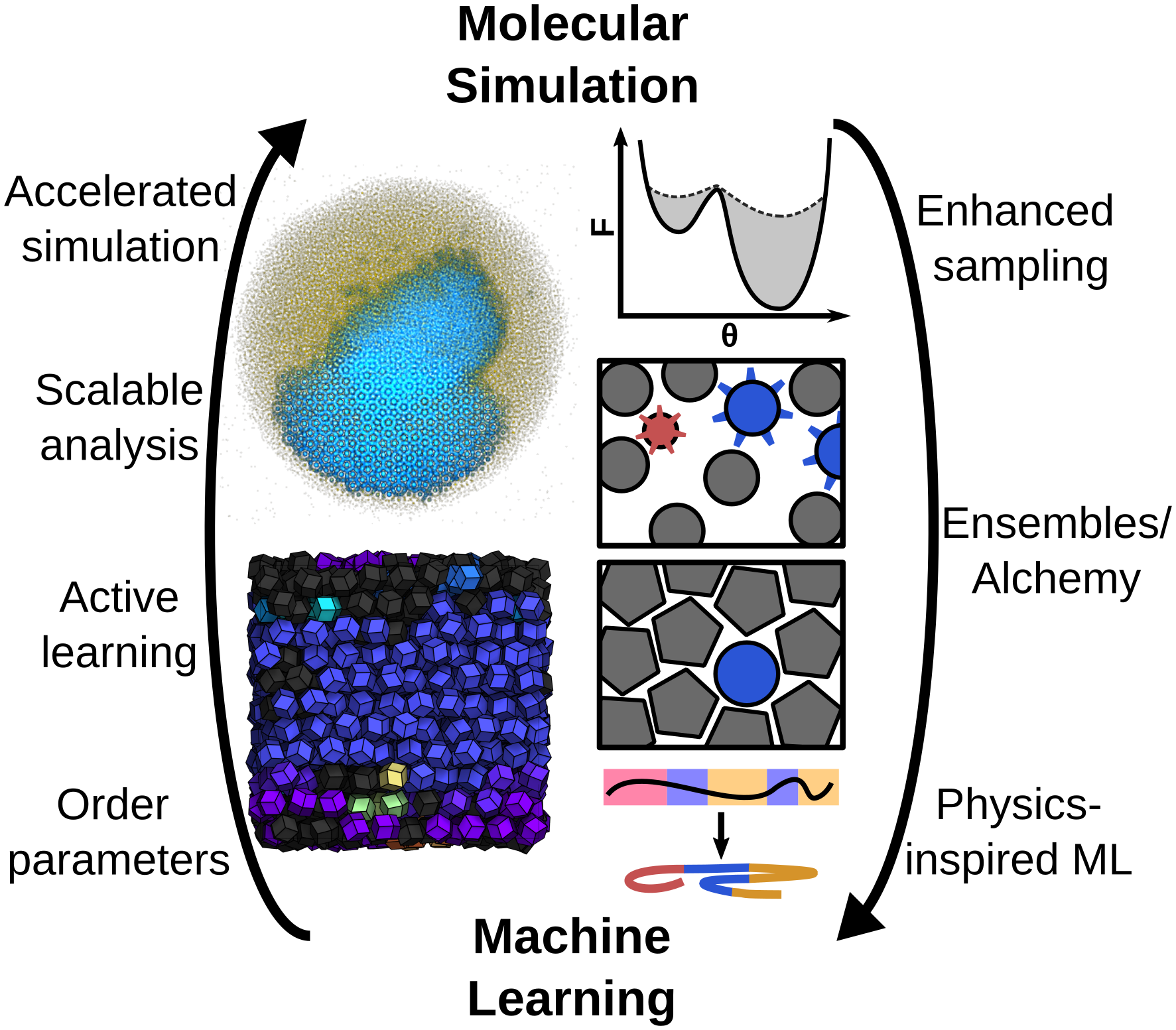2022 Annual Meeting
(2bk) Using Machine Learning to Empower Science and Strengthening Machine Learning through Physics
Author
Over the last several decades, the field of molecular simulation has emerged and blossomed into an extremely powerful paradigm to analyze and control micro- and nanoscale systems. Whether we seek to understand the mechanisms of disease, create new drugs, engineer stronger materials, design more powerful batteries, or simply rationalize the behavior of water, scientific realms from medicine to basic physics have been driven forward by a confluence of theory-based method development and ever more powerful and easily accessible computational hardware. Simultaneouslyâalthough on a shorter time scaleâresearch advancements and the increased availability of parallel hardware and high-quality data have caused machine learning applications to flourish in many areas outside of computer science, including scientific and engineering research. My work lies at the intersection of deep learning and the physical sciences, and draws from both fields by enhancing our knowledge of physical systems using deep learning, as well as improving deep learning algorithms via physics.
Transforming our scientific capabilities through deep learning. Machine learningâand deep learning in particularâcan fundamentally change the way we seek knowledge of physical in numerous ways: accelerating analysis for large-scale studies through fast, flexible, and high-fidelity learned analysis methods; finding rules that govern complex, non-equilibrium assembly pathways and other physical processes; illuminating the similarities and differences of how disparate interactions can form common structures in self-assembly; and intelligently guiding the design loop in high-dimensional, complex parameter spaces are just a few of the most exciting opportunities I see in the field. These projects are motivating new machine learning work in the areas of geometric deep learning, model interpretability, generative modeling, and active and reinforcement learning.
Applying physical insights to improve deep learning. Here we can draw upon the decades of experience that the molecular simulation community has accumulated in dealing with high-dimensional stochastic behaviors in order to create faster and more robust machine learning algorithms. The field of deep learning holds many analogies to physical systems: viewing optimization of neural networks in terms of their loss landscapes, generating ensembles of neurons or network predictions, and studying the behavior of networks in terms of criticality and phase transitions are just a few of the places where researchers have used physical intuition to better understand neural networks. My work builds on this by using âalchemyâ to optimize network architectures, leveraging enhanced sampling techniques to improve optimization algorithms, and taking problems in the physical sciences as inspiration to motivate new deep learning architectures with strong priors.
Working at the leading edge of research in machine learning and the molecular sciences reveals rich opportunities for synergy between the two fields. Machine learning drastically changes the scope of the types of physical problems that can be investigated by allowing us to capture minute details in large-scale datasets, while physical systems motivate the creation of new machine learning algorithms. My work at the intersection of these two fields draws on the strength of both, to increase our understanding of physical systems and improve the efficiency and reliability of machine learning algorithms.
Teaching Interests
As a computational scientist, I believe that building familiarity and proficiency with modern free and open-source analysis, simulation, and visualization software is crucial to prepare students for their next steps, whether they will move forward in industry or academia. I would be pleased to apply this perspective and focus on modern software tools not only to the standard engineering core coursesâsuch as mass and energy balances, fluids, and control theoryâbut also more specialized classes that I would love to develop in molecular simulation, self-assembly, and deep learning. In the classroom, I think it is important to understand and accommodate the diversity of backgrounds and learning styles of students that are present; I plan to improve the information retained by students by exposing them to course material in a variety of settings aside from the typical lecture format. Overall, I expect to help students build a firm foundation of both knowledgeâas is expected from coursesâand computational tools that can be used to apply that knowledge.
Key publications
- M. Spellings, âGeometric algebra attention networks for small point clouds,â arXiv:2110.02393 [cs], Oct. 2021, [Online]. Available: http://arxiv.org/abs/2110.02393
- V. Ramasubramani, B. D. Dice, E. S. Harper, M. P. Spellings, J. A. Anderson, and S. C. Glotzer, âFreud: a software suite for high throughput analysis of particle simulation data,â Computer Physics Communications, vol. 254, p. 107275, Sep. 2020, doi: 10.1016/j.cpc.2020.107275.
- M. Spellings and S. C. Glotzer, âMachine learning for crystal identification and discovery,â AIChE Journal, vol. 64, no. 6, pp. 2198â2206, 2018, doi: 10.1002/aic.16157.
- H. Lin, S. Lee, L. Sun, M. Spellings, M. Engel, S. C. Glotzer, C. A. Mirkin, âClathrate colloidal crystals,â Science, vol. 355, no. 6328, pp. 931â935, Mar. 2017, doi: 10.1126/science.aal3919.

